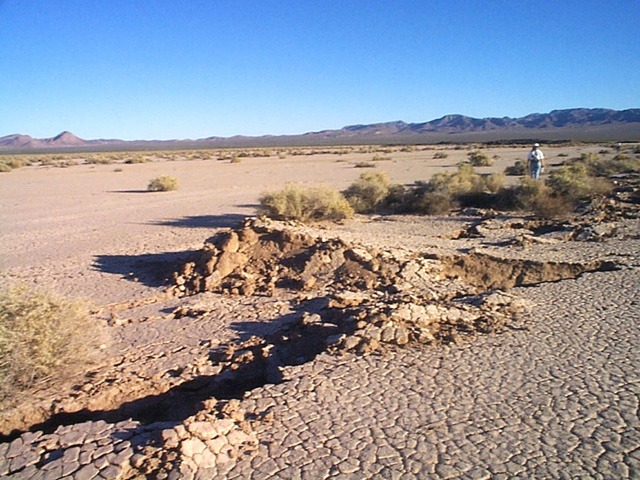22 April 2022–Earthquake aftershocks form spatial clusters around a mainshock, instead of evenly surrounding the mainshock. Researchers have known this for decades, but the reasons for this clustering are still unclear.
To explore this question further, Jeanne Hardebeck of the U.S. Geological Survey took a closer look at the aftershock sequences for four well-known earthquakes in Southern California and the physical properties of the crust where these aftershocks took place.
Aftershock rates tend to decrease further away from the nearest mapped fault and increase with increasing strain rate, and scale with the background seismicity rate, Hardebeck said the Seismological Society of America’s Annual Meeting. But other physical factors like rock composition and temperature were not correlated with aftershock clustering in her study.
Hardebeck wasn’t too surprised that properties like strain rate and proximity to a nearby fault would be connected to aftershock clustering, she said, “but I was really hoping to find correlations with properties like rock composition that would give you some information about what physically is happening to cause aftershock in one place or another.”

“At least since the 1980s, people have been trying to explain aftershock clusters through seismic stress changes from the mainshock,” which increases stress in some places and decreases stress in others, Hardeback explained. “What we’ve found from that is that there definitely is some correlation but it doesn’t fully explain the locations of the aftershocks.”
To look for physical properties that could help narrow down these locations, Hardebeck analyzed aftershock sequence data from the 1992 Landers earthquake, the 1999 Hector Mine earthquake, the 2010 El Mayor-Cucapah earthquake and 2019’s Ridgecrest earthquake. Thanks to the efforts of the Southern California Earthquake Center (SCEC) and others, Hardebeck was also able to draw on a rich database of crustal properties mapped across Southern California.
The new correlations uncovered in Hardebeck’s study improve models of aftershock spatial clustering, but still fall short of capturing the density of the clustering, she said. The next step will be to test her correlations in other regions such as Japan, which also has extensive aftershock data and crustal mapping.
At the USGS, Hardebeck works with others to issue aftershock forecasts after large earthquake events. “In the future, we might start considering some of these properties with the good correlations and start including them in the models used to make those forecasts,” she said.
Aftershocks are “probably the most predictable earthquakes” that seismologists study, Hardebeck noted, since researchers at least know that aftershocks are going happen close in space and time to a mainshock.
“Studying aftershocks, even though they are maybe less flashy than studying the main earthquakes, might be a good way to test any kind of methods for predicting where and when earthquakes might happen,” she said.
